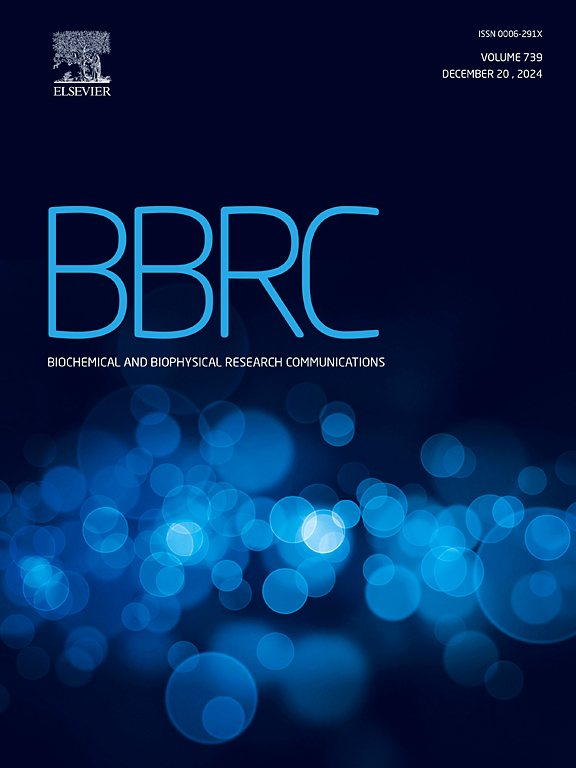A liver-specific mouse model for MYO5B-associated cholestasis reveals a toxic gain-of-function as underlying disease mechanism
IF 2.5
3区 生物学
Q3 BIOCHEMISTRY & MOLECULAR BIOLOGY
Biochemical and biophysical research communications
Pub Date : 2025-03-20
DOI:10.1016/j.bbrc.2025.151669
引用次数: 0
Abstract
Myosin Vb (MYO5B) deficiency, referring to the loss of protein expression or function, causes microvillus inclusion disease (MVID) and/or progressive familial intrahepatic cholestasis-type 10 (PFIC10) in humans. MYO5B plays a role in intracellular trafficking, but the mechanisms by which it contributes to cholestasis are not understood. The aim of this study was to generate a liver-specific mouse model and investigate the mechanism of MYO5B-associated cholestasis. In this study, we generated a liver-specific Myo5b cKO mice via CRISPR/Cas9 genome editing in conjunction with albumin-cre recombinase. Cholestatic stress was induced by dietary-administration of cholic acid (CA) or 3,5-diethoxycarbonyl-1,4-dihydrocollidine (DDC). To investigate the frequently recurring MYO5B variant (c.2470C > T/p.(Arg824Cys)), adenoviral vectors encoding either the missense variant or blank control sequence were delivered to wild-type and Myo5b cKO mice through tail-vein injection. Serum and liver tissues were harvested from all mice for biochemical and histological analysis. Our findings indicated that loss of Myo5b expression did not cause cholestatic liver disease and did not augment CA or DDC feeding-induced cholestatic stress. By contrast, expression of the MYO5B c.2470C > T/p. (Arg824Cys) variant induced cholestasis, evidenced by elevated levels of serum alanine aminotransferase, alkaline phosphatase and bilirubin, mild hepatocellular injury, and altered bile salt export pump (Bsep) localization, resembling that observed in human PFIC10. In summary, we have developed a mouse model of MYO5B-associated cholestasis. The expression of the MYO5B-p. (Arg824Cys) variant but not the loss of Myo5b expression caused cholestasis, indicating a toxic gain-of-function as underlying disease mechanism.
求助全文
约1分钟内获得全文
求助全文
来源期刊
CiteScore
6.10
自引率
0.00%
发文量
1400
审稿时长
14 days
期刊介绍:
Biochemical and Biophysical Research Communications is the premier international journal devoted to the very rapid dissemination of timely and significant experimental results in diverse fields of biological research. The development of the "Breakthroughs and Views" section brings the minireview format to the journal, and issues often contain collections of special interest manuscripts. BBRC is published weekly (52 issues/year).Research Areas now include: Biochemistry; biophysics; cell biology; developmental biology; immunology
; molecular biology; neurobiology; plant biology and proteomics

 求助内容:
求助内容: 应助结果提醒方式:
应助结果提醒方式:


